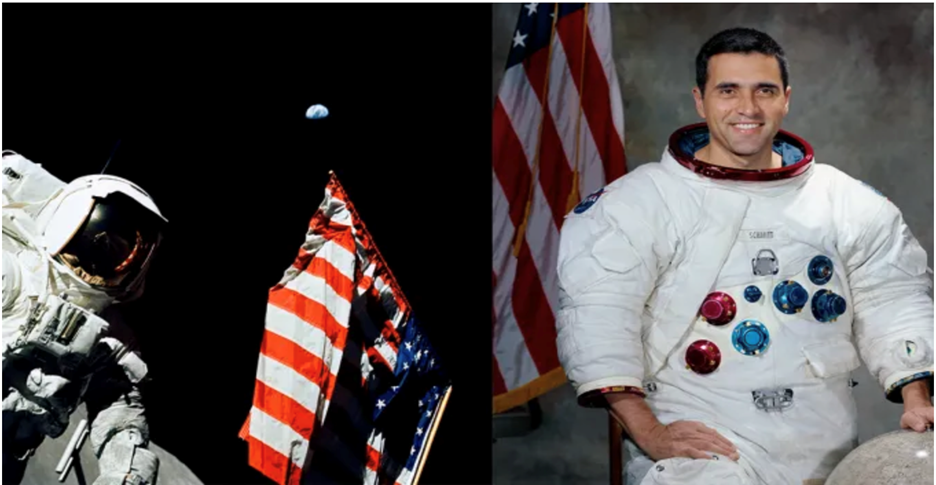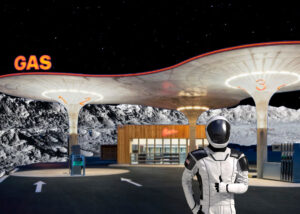Mining helium-3 on the moon has been proposed more than once as a potential energy source, most prominently by former astronaut Harrison Schmitt. A geologist, Schmitt was selected by NASA to train Apollo astronauts for moon landing missions, and he was the Lunar Module Pilot for Apollo 17, the last manned moon mission in December 1972.

In his book, Return to the Moon: Exploration, Enterprise, and Energy in the Human Settlement of Space, Schmitt discussed using the Moon as a platform for science and manufacturing and a stepping-stone to explore deeper space. He advocated for lunar exploration and the potential use of lunar resources, including extracting helium-3 for energy generation.
Helium-3 does have the potential to provide a highly efficient and relatively clean form of energy generation unlike nuclear fusion reactions, because the fusion of helium-3 atoms releases large amounts of energy without causing radioactivity.
In a 1988 white paper, Economic Geology of Lunar Helium-3 by Harrison H. Schmitt, he wrote that “fusion power plants fueled by helium-3 from the moon could supply the electrical energy human civilization will require to maintain and expand its quality of life as we enter the Third Millennium….”
While helium-3 is found on the moon’s surface, extracting it would take significant technological advancements, and transporting it back to Earth poses huge logistical and cost challenges. Let’s explore how that might theoretically work:
Extraction: Helium-3 is deposited in the lunar regolith (fragmented and unconsolidated rock material across the surface) by solar winds, as opposed to planet Earth where the planet’s magnetic field deflects the solar wind. Not yet developed autonomous mining equipment would need to isolate it efficiently from other materials.
Energy: The energy required to mine gas on the moon would require advanced renewable sources like solar or even compact nuclear reactors to power the equipment for long periods.
Transportation: Once extracted and stored, helium-3 would need to be transported back to Earth via a cost-effective logistical infrastructure involving lunar landers and specialized tanker spacecraft.
International Cooperation: According to the Outer Space Treaty of 1967 (signed by 109 nations), outer space is the “province of all mankind” and no nation can “own” the Moon. As a result, mining helium-3 on the moon would require international cooperation and collaboration, both in terms of technology development and regulatory frameworks.
While it’s unlikely we will be mining or using helium-3 for the foreseeable future, the ongoing search for alternative energy sources producing little or no waste products continues, including the golden fleece of Cold Fusion. Current research is focused on helium-3 in combination with deuterium to generate energy, but practical applications are still only in the preliminary phase.
In 1995 Schmitt was the lead author of a NASA proposal called Interlune-One, intended to probe the lunar regolith for potential resources, including helium-3. From that proposal in March of this year, a startup appropriately named Interlune announced intentions to mine the lunar regolith. Schmitt is a co-founder and executive chairman of the startup. Interlune’s CEO Rob Myerson is a former president of Jeff Bezos’ Blue Origin space exploration company.
As our earth-bound transportation and logistics industry continues to explore different clean energy sources, scientists drive towards the visionary goal of generating power for vehicles while producing zero-emissions. And as the effort to deploy commercial EV trucks continues, clean energy zero emission generation of electricity by future sources such as helium-3 could prove to be extremely beneficial.











